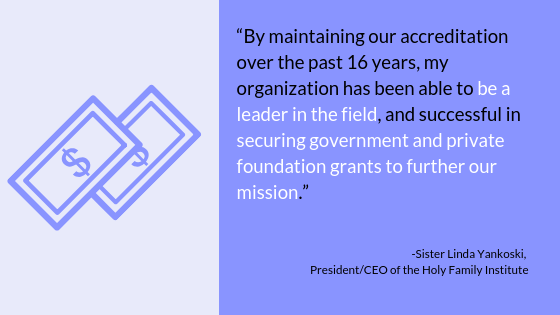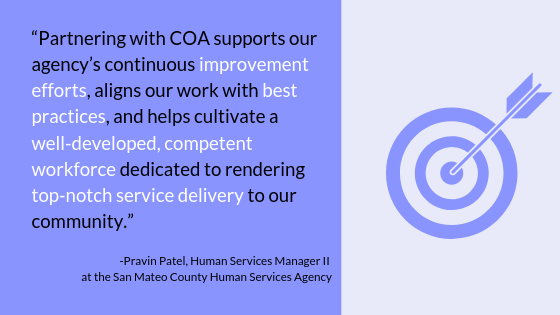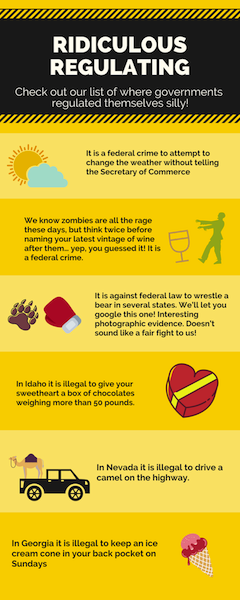This is Part I of a series on the Council on Accreditation (COA)’s 2020 Edition updates. Visit Part II here.
On January 15, 2020, we released an enhanced and refined set of private, public, and Canadian standards on our website. All of the work was done with a single goal in mind: to increase the value of accreditation by focusing on those practices and activities that will have the greatest impact on the people and communities COA-accredited organizations work with.
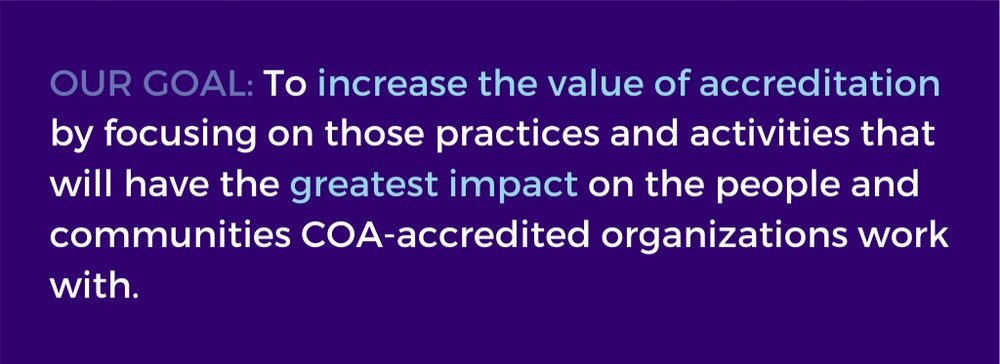
Our approach to the work
The COA 2020 Edition was the culmination of a review of the literature on organizational effectiveness and valuable feedback from our volunteers, organizations, and partners who provided critical insight into which aspects of COA’s accreditation process and standards were impactful to organizations and their clients, and which were not.
Our mission at COA is to partner with human and social service organizations to strengthen their ability to improve the lives of the people they serve. Our belief is that in order to have the greatest impact on clients, the entire organization—from Human Resources to Finance to those directly delivering services and beyond—must be working together to fulfill that organization’s mission. COA’s 2020 Edition was designed to highlight and strengthen that connection.
Refocusing the Self-Study process
In service of focusing accreditation on the standards that promote the development of effective, mission-driven organizations that are equipped to meet the needs of their clients over time, we have refined the standards to:
1. Give organizations more time to devote to those practices that have a more direct impact on clients, and
2. Allow organizations to spend less time compiling evidence and more time improving practice.
This is reflected in the 2020 Edition in multiple ways.
Firstly, in the years of work leading up to the 2020 Edition Standards launch, we sought to tighten what we ask of organizations. We eliminated or combined redundant standards within and across sections. We reorganized similar content whenever possible, and we eliminated overlap with state and government regulation.
We also sought to clarify expectations and delete what wasn’t needed. One way this was accomplished was by minimizing Interpretations within the standards including converting those that were informational in nature and not required into “Examples,” deleting those that were unnecessary or outdated, merging required interpretive language into the standard whenever possible, and adopting naming conventions to clarify when Interpretations only apply to specific service types (e.g. FEC Interpretation). Another was by moving research notes out of the standards and into the Reference List for each section.
Finally, we made a concerted effort to alleviate evidence pain points identified by our organizations and volunteers. This included:
- Deleting all narratives in both the AM/SDA sections and the Service sections
- Deleting requests for “descriptions of services” from the self-study evidence
- Minimizing requests for meeting minutes and clarifying the quantity that is needed when appropriate
- Standardizing how we ask for training documentation
- Standardizing how we ask for information on caseload or workload
- Removing requests for documentation of legal compliance
- Eliminating Data Sheets from the service sections except where they may be provided as an optional resource for reporting information when desired
- Eliminating redundant evidence or documentation requests from across the various stages of the accreditation process
This all means that organizations seeking reaccreditation will see significant reductions in the volume of requested evidence. It is our intention that the staff time and resources gained from these reductions can be redirected to the practices that have the most impact on the individuals and families served.
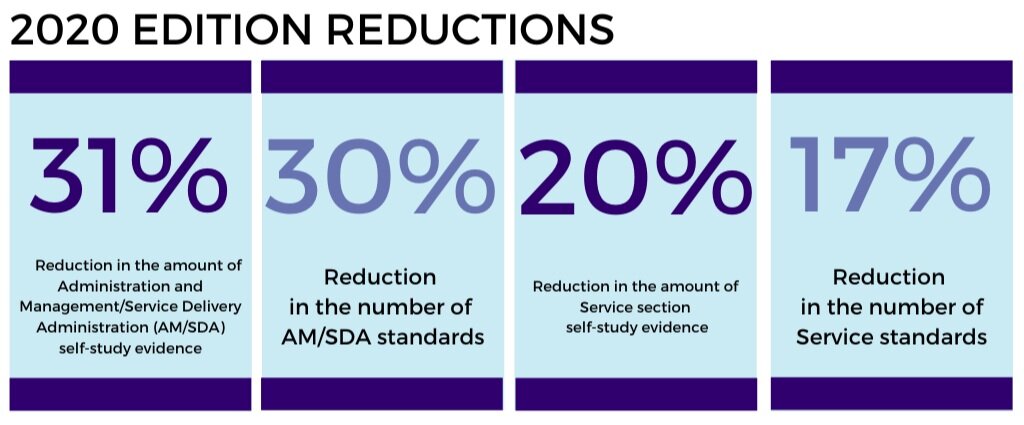
Homing in on Administration and Management (AM) standards
With the 2020 Edition, we wanted to clarify and strengthen the connection between Administration and Management (AM) standards of practice and mission fulfillment.
With that in mind, we reviewed all five of the administration and management standards, which include Human Resources (HR), Financial Management (FIN), Performance and Quality Improvement (PQI), Risk Prevention Management (RPM), and Governance (GOV), to identify and in some instances enhance the standards and evidence that will be used to assess the role each part of an organization plays in supporting impact or achieving its mission.
For a detailed breakdown of the important role each part plays in this, download our fact sheet here.
Highlighting the most important practices
As organizations familiar with our accreditation process know, Fundamental Practice (FP) standards are those standards that an organization must meet in order to achieve accreditation. With the mission impact-focus of the 2020 Edition, we have expanded the categories of FP standards to include practices that promote organizational effectiveness. FP categories now include: Health and Safety, Client Rights, and Organizational Effectiveness.
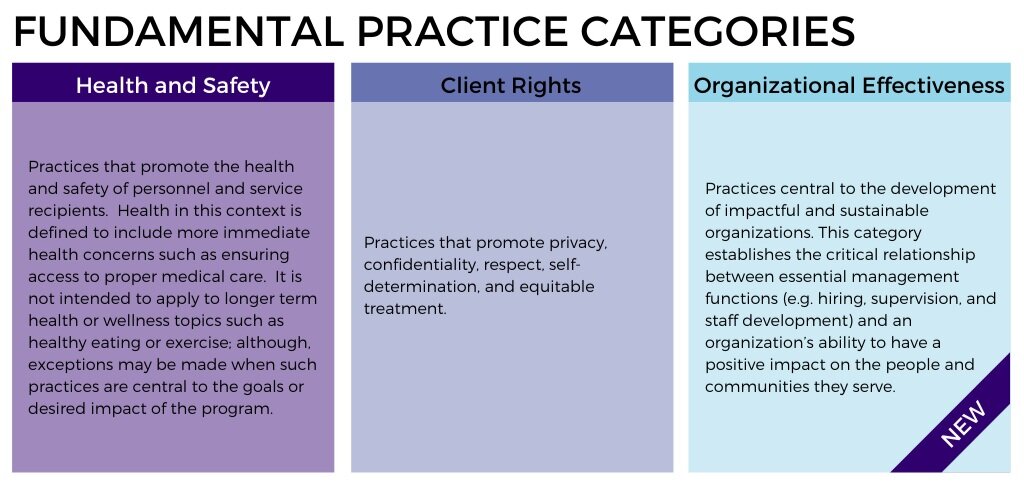
It all comes together with strategic planning
An organization’s mission serves as the benchmark by which organizational effectiveness is measured, and strategic planning is the vehicle by which an organization can move towards closing the gap between where they want to be (their mission) and where they are today. Outcomes data coming from PQI activities, HR data coming from the annual assessment of workforce needs, and risk prevention and management activities are all examples of information that feeds into the strategic planning process. Strategic planning, in turn, informs each decision that an organization makes, from budgeting decisions to hiring and personnel development decisions, with the ultimate goal of closing its mission gap.
This is why we have introduced a new Core Concept standard on Logic Models into every service section of the 2020 Standards. These standards guide organizations to think systematically about:
- The client outcomes they hope to achieve
- The ultimate impact each of their programs is intended to have
- How the program will utilize its assets and resources to achieve its goals
In other words, we’re hoping to help organizations work smarter, not harder.
These logic models denote an exciting advancement in our standards from previous iterations. To learn more about them, check out Part II of this blog series: COA 2020 Edition | FAQs about the Logic Model.
For more information on the changes in the 2020 Edition and who they affect, download our overview here. Accredited and in-process organizations can also access two recorded webinars with in-depth information in their MyCOA portal (under the tools tab). If you are new to COA and have questions about the standards or process changes, feel free to contact us!
So, you’ve been designated by your organization as the Primary Contact—the point person for communicating with the Council on Accreditation (COA) and spearheading the accreditation process. Maybe you’re feeling a little overwhelmed; you might not be sure about the best way to get the job done. Fear not! We’re here to help with tips on how to make the process as smooth as possible, whether this is your first time managing the accreditation process or your fifth.
1) Get organized

If we were to create a job description for the Primary Contact role, strong organizational skills would be first on the list of required traits. You need to be able to organize, prioritize, and project manage. This includes assessing the scope of the work, identifying available/necessary resources, and planning for the completion of tasks while working towards deadlines.
There are a lot of moving parts during the accreditation process, so it is critical to stay on top of due dates and important notifications from COA. You also need to make sure that these are communicated within your organization, and that you clearly outline expectations regarding the workload and workplan for other staff to maintain efficiency.
Sound like a lot? Don’t worry! We have some resources that can help those efforts. Here are a few to get you started:
- SELF-PACED TRAINING: Getting Organized/Creating a WorkplanThis self-paced training provides guidance on coordinating and managing the work of the self-study process, with the goal of developing a comprehensive accreditation work plan.
- BLOG POST: Roadmap to Preparing for the Accreditation Process Another handy, step-by-step guide to help you get a handle on the various tasks involved with accreditation.
- BLOG POST: Creating Effective Workgroups on the Road to AccreditationGet tips on how to organize and delegate work to different staff.
- MYCOA PORTAL: Your Standards and Self-Study StepsWe built the MyCOA Portal with the goal of setting you up for success. The Standards & Self-Study tab (option five in the blue navigation bar at the top of the screen) is one good example of this: it features a checklist of steps to complete during the Self-Study process; a progress bar to help you track how you’re doing; and links to important documents to help you along the way.
2) Communicate clearly and often

The accreditation process centers around good internal and external communication.
From an external standpoint, as the Primary Contact you are responsible for overseeing all communications between your organization and COA. Whether it is over the phone or email, it is essential to keep your Accreditation Coordinator in the loop about any significant program updates or organizational changes.
From an internal standpoint, it is important to have staff, management, and your governing body appropriately informed of the process. This will not only help everyone work together to get things done, but also ensure that accreditation’s benefits are felt organization-wide.
Pro tip: Maximize your relationship with your Accreditation Coordinator
COA partners with organizations throughout the accreditation process. A key component of that partnership is the relationship between the Accreditation Coordinator and you, the Primary Contact. Here are a few suggestions on how to capitalize on this unique benefit.
- Schedule – and really use to your advantage! – a monthly call, especially if it’s your first time going through the process. Having the time carved out on your calendar ensures that you have time specifically dedicated to accreditation each month. (Ex: “I have my call with my Coordinator next week and I haven’t looked at the FPS standards yet – let me get on that now!”) We understand that everyone has a million things going on in addition to accreditation, so blocking off time for checking in and asking questions is one way to stay on top of things.
- Check out our extensive accreditation resources first before bringing any additional/clarifying questions onto your call. This will make sure that you’re using your time with your Accreditation Coordinator as productively as possible.
- Involve other staff members in the monthly calls. Not only can this be a more efficient way to get everyone on the same page, but it also makes the process more team-driven and rewarding. This allows other staff members to “get to know” the COA voice on the other end of the phone to experience the partnership firsthand.
- Whether for scheduled calls or when staying in contact in general, it is helpful for Accreditation Coordinators when Primary Contacts gather and send questions all at once, especially very specific standards questions. This is particularly beneficial when it comes to monthly check-in calls. If questions are sent over (in one email) a few days before the call, it gives the Accreditation Coordinator time to prepare and touch base with their team/the Standards Development Department as needed, which maximizes your time and makes for a productive conversation.
3) Be transparent

Transparency is another critical factor to your success as a Primary Contact. This goes hand in hand with being a good communicator.
We often say that the Self-Study process is like holding a mirror up to your organization. This works best for everyone when the mirror is a clear one! Your Accreditation Coordinator is there to provide technical assistance and targeted support, but they can only do so if you communicate honestly about your struggles so that they can help you navigate your pain points. Identify your organization’s needs and be eager to ask questions.
This advice applies when communicating within your organization as well. Often, we find that one staff member doesn’t always hold all the knowledge/documents that are necessary to complete the accreditation process; therefore, it is important that you approach other staff and pull them in as a resource when needed.
4) Get involved

We’ve already highlighted the importance of working with your Accreditation Coordinator – they are there to answer questions, interpret the standards, and guide you through the process. But don’t forget about all our other resources that are there for you to tap into!
If it’s feasible time- and budget-wise, attending our live Intensive Accreditation and Performance and Quality Improvement trainings can be very impactful, particularly if you or your organization are new to the accreditation process. We hold these trainings a few times a year. They are a great resource not only for taking a deeper dive into managing accreditation and learning strategies to enhance your PQI system, but also for networking with (and learning from!) colleagues that are in the same boat as you. Attending these is not a prerequisite for being a stellar Primary Contact, of course, but they are helpful if you can make it to them.
COA also has a plethora of self-paced trainings, tip sheets, tool kits, and more. Your MyCOA Portal will offer suggestions of which of these will work best for you at different points in the accreditation process. Be sure to use it! You will find everything that you need there to successfully navigate the process. The portal is secure, customized and will always include the specific information that is relevant to your organization.
Digging into these resources will provide you with a good overview of 1) how COA is going to review your organization, and 2) all the major milestones you need to hit along the way. This will help you to grasp the amount of work needed and the different deadlines that your organization is going to approach. Knowing these will help you guide others in your organization toward success.
Pro tip: Find your tribe
COA lists all our accredited organizations on our public website. Use the Who is Accredited Search to find peer organizations by location or service area. This practice can help you create a network and empower you and other Primary Contacts to access resources, share information, and ultimately make the most out of the accreditation process.
5) Be an accreditation cheerleader

Getting through the accreditation process is all about creating and maintaining momentum with your team. COA’s review is very comprehensive, and so it includes many potential ways for different staff to participate. Establishing and championing those opportunities can contribute to making accreditation more fun, rewarding, and successful.
We encourage Primary Contacts to tap into their creative side. Try developing a game that incorporates COA’s accreditation standards or creating a fun visual that tracks your progress. Your job is all about being a good motivator, so celebrate the victories both big and small. With as hard as you’re working, you all deserve it!
Though being a Primary Contact can feel like a lot of responsibility, rest assured that accreditation is by no means a one-person job. The process–from pulling together Self-Study evidence to preparing for the Site Visit–should be a team effort. Your role, then, is of a team captain. With these tips, we hope you can get out there and lead your crew to success!
Further reading
If you want to do a deeper dive, we’ve pulled together some additional resources below. Don’t forget to also check out those linked directly in your MyCOA portal.
- Accreditation Learning Plan
- Preliminary Self-Study Fact Sheet
- Three-Part PQI Recorded Webinar Series
- PQI Tool Kit
- Intro to Logic Models
- Governance Standards Tool Kit
- Policies and Procedures Checklist
- Preparing for the Site Visit
To plan or not to plan? On a personal level, planning is an essential aspect of everyday life. What do I need to get done today? This week? This month? In many ways, planning helps us prepare for the challenges and tasks that may lie ahead. Think of the to-do lists that you make. Whether you physically write tasks down, use an app to organize your to-do’s, or arrange them in your mind, you are planning what needs to get done. In a sense, you are mapping out your future by addressing things that require your attention in the present. It stimulates your mind to embrace the future and envision yourself doing something to reach a desired result. Planning is a necessary activity in setting goals for yourself.
For human service organizations, whether small or large, planning is equally essential. As an organization that provides goods and services to individuals and families with varying levels of need, it is imperative that forecasting is done. This helps to create a roadmap for the direction in which the organization is headed. This is where long-term planning comes in.
Strategic planning, which is synonymous with long-term planning, is about establishing goals to sustain the future of human service organizations. Why is it called strategic planning? Strategy is the operative word from which strategic is derived. Historically, strategy was associated with the appointment of a general in the military to provide guidance on defeating enemies within battle. To serve as an advisor, many things had to be considered, including the size of the opposing army, weaponry, level of skill, landscape at battle locations, etc. in order to develop a winning strategy. Essentially, knowledge on competing factors had to be gathered to make informed decisions about next steps.
Strategic planning for nonprofit organizations follows a similar concept. Since the late 20th century, strategic planning has been used in the nonprofit sector to gather knowledge in order to determine strategy for advancing an organization’s mission. While creating a strategic plan involves levels of complexity and can be overwhelming to think about, it is critical to have a process in place for developing the plan.
Some people ask, “why should we establish a multi-year plan, when organizations are working under the pressures of an ever-changing economic, social and political climate?” While this may very well be true, in the words of Yogi Berra, “if you don’t know where you are going, you might wind up someplace else.” Human service organizations need something to which they can ascribe and push themselves to continuously evolve for the purpose of fulfilling their missions. So, if the organization is operating in a fast-paced environment, strategic planning supports the need to stay on a particular course rather than change paths so frequently that the direction in which the organization is headed is not clear to anyone within the organization.
Strategic planning is about creating a strategy where the end product is a long-term plan to be implemented over the next four years, at minimum. It isn’t just about identifying broad goals to be realized, but also key strategies for how the organization will meet those goals. The traditional strategic planning methodology involves getting feedback from different internal and external stakeholders, such as staff, clients, and community partners; obtaining information on the environment, such as with a community needs assessment or environmental scan; and conducting an analysis of the strengths, weaknesses, opportunities and threats (SWOT) of the organization. Many organizations tend to omit a SWOT analysis from their strategic planning process; however, it is beneficial because it provides an assessment of the internal (strengths and weaknesses) and external (opportunities and threats) landscape. Since the strategic planning process includes perspectives from various types of stakeholders, an organization can incorporate feedback in these categories to inform strategic decision-making. Mind Tools, Inc. offers some great resources on conducting a SWOT analysis.
As is the case with for-profit organizations, typically the owners, board members, and leadership in nonprofit organizations lead the strategic planning process. Strategic planning is a critical activity within human service organizations because it provides a sense of direction in which the organization is headed.
If my organization develops an annual plan, should we still develop a strategic plan?
To put it simply, yes. Your organization should still create and implement a strategic plan, even if annual plans are developed; each plan has a different purpose.
The strategic plan identifies the framework for the organization on how to build and sustain programming over time. Should the organization pursue a new funding stream, provide new services aligned with its mission, adopt a trauma-informed model? The strategic planning process allows the organization to determine ways to advance its mission and consider the resources needed to do this. If the organization wants to build a new, state-of-the-art training facility, the strategic plan would include strategies to secure funding, such as a capital investment grant.
The annual plan can include goals that are directly or indirectly related to the strategic plan and are specific to the department or program. So, essentially, the strategic plan influences the annual plan; it is usually not the other way around. Annual planning is largely connected to the budgetary approval process for the next fiscal year. Therefore, it usually involves department and program directors since they project anticipated revenue and expenses, and ways the department is expected to grow. For the annual plan, organizations need to consider where they want programs to be within the next year and the strategic priorities shape those annual goals. Does the organization want to increase the number of clients served by 15% or offer support groups to survivors of human trafficking? The annual plan is operational and considers the daily tasks needed to run a program or department. If one of the organization’s strategic goals is to provide trauma-informed care to clients in all 3 counties where services are provided, then providing new support groups to trafficking survivors seems more closely aligned with the organization’s strategic plan than increasing the number of clients served in programs. This is an example of how an annual plan goal is supported by a goal outlined in the strategic plan. The strategic plan should guide the organization’s yearly objectives.

In order to successfully implement both strategic and annual plans, the organization should identify opportunities to track progress over time. Establishing clear metrics to demonstrate whether goals have been accomplished allows the organization to periodically verify implementation of either type of plan. Determining how progress is measured is equally as important as developing the plan and should be outlined within procedures. Once a clear mechanism has been established, it should be outlined in the strategic and annual planning procedures.
Benefits of strategic planning
- Provides a roadmap to stakeholders on organizational advancements
- Fosters a mission-driven culture within the organization
- Demonstrates a commitment to excellence
- Engages staff in forward-thinking
- Advances the impact of fulfilling organization’s mission
Benefits of annual planning
- Establishes short-term gains to enhance programming
- Provides a deeper connection to the strategic plan
- Reinforces the mission of the organization in daily practice
- Gives staff a clear direction on their responsibilities within the program/department
So, back to the original question, to plan or not to plan? If you are likely to plan out your day, week, or even the next month, hopefully, you see the value in planning the priorities for your organization over the next year and especially how the next several years could potentially look. In addition to creating an opportunity to explore new avenues for the organization, strategic and annual planning can foster a sense of hope in your staff about what may be on the horizon for your organization, despite all the external pressures that organizations continuously face.
A few resources
- National Council for Nonprofits strategic planning tools
- Strategic Planning for Nonprofit Organizations: A Practical Guide for Dynamic Times by Michael Allison and Jude Kaye
- Example of strategic and annual plans and how they interact:

Since Congress passed the Family First Prevention Services Act (FFPSA) in February 2018, stakeholders across the U.S. have been working to maximize the opportunity posed by this tremendous reform to our child welfare system. To ensure that children and families reap the positive benefits of FFPSA, service-providing agencies, social workers, child welfare officials, accrediting bodies, policy makers, and advocacy organizations have been rigorously planning for implementation, all while trying to keep up-to-date on the latest guidance and policy.
Looking for an FFPSA 101? Watch our informational video.
As COA began working with service providers impacted by FFPSA, we found that organizations were not only interested in information about the accreditation process, but also resources relevant to the larger scope of FFPSA provisions. That’s why we created the COA FFPSA Resource Center, a hub of FFPSA-related content including federal guidance, tools and resources, accreditation information, events and trainings, and news.
We are continually evolving the website as new guidance and/or policy is released and as states move forward with implementation. Have a resource, article, or tool that you’d like to see posted on the Resource Center? We’d love to hear from you! Reach out to us by email at PublicPolicy@coanet.org.
Just starting to peruse the site and not sure where to start? Fear not! We’ve created a list of 5 helpful resources to get you started.
1. Federal Requirement Comparison: QRTP and PRTF
From the Building Bridges Initiative
With the support of the Annie E. Casey Foundation, Building Bridges created this comparison to assist providers in understanding the federal requirements set forth for Qualified Residential Treatment Programs (QRTP) and Psychiatric Residential Treatment Facilities (PRTF). The information is organized in a table by requirement component, so that readers can do a line-by-line comparison of each program’s respective requirements. Though QRTPs and PRTFs have some similarities, these programs were created and defined separately in federal law in order to establish varying levels of care for children and youth with significant behavioral health needs.
Building Bridges is a national initiative working to identify and promote practices and policies that will create strong coordinated partnerships and collaborations between families, youth, community- and residentially-based treatment and service providers, advocates, and policy makers to ensure that comprehensive mental health services and supports are available to improve the lives of young people and their families.
2. Responsibly Defining Candidacy within the Context of FFPSA: 5 Principles to Consider
From the Center for the Study of Social Policy
The Center for the Study of Social Policy created this brief of guiding principles for states to consider as they work to identify a definition of foster care candidacy that fits within the context of their state policies and prevention service array.
FFPSA defines the term ‘child who is a candidate of foster care’ to mean “a child who is identified in a prevention plan under section 471(e)(4)(A) as being at imminent risk of entering foster care…but who can remain safely in the child’s home or in kinship placement as long as services of programs specified in section 471(e)(1) that are necessary to prevent the entry of the child into foster care are provided” (Sec. 50711). This means each state will be responsible for defining candidacy in their State IV-E Plan, which will be submitted to the Children’s Bureau. State definitions of “candidacy” will be extremely important in deciding which children and families will be served under FFPSA prevention services. This resource provides a guiding methodology for state policymakers in creating that definition and assists in considering the way such a policy will impact children and families in their state.
3. Program Standards for Treatment Family Care
From the Family Focused Treatment Association (FFTA)
As we learn more about the impact that FFPSA implementation will have, it has become clear that there is a need to bolster the continuum of child welfare services offered to meet the needs of children and families. Treatment Family Care (TFC), also known as Treatment Foster Care (TFC), has emerged as a leading service to meet the behavioral needs of children in home-settings rather than residential care. The strict parameters established around residential placement under FFPSA puts a spotlight on TFC as a service that can maintain a residential level of care while keeping children and youth in a home-setting.
Though TFC services are provided across the country, federal guidance related to funding opportunities, practice standards, and program oversight has never been issued. Fortunately, Congress is currently considering the Treatment Family Care Services Act (HR3649 and S1880), which will provide states with a clear definition and guidance on federal TFC standards under the Medicaid program and other federal funding streams. This clarification will promote accountability for states offering TFC, support FFPSA implementation, promote appropriate TFC services for reimbursement, and drive personnel training and standards.
FFTA first published their own Program Standards for TFC in 1991 to define the model and set parameters for the field. In 2019, FFTA published the revised 5th edition, which provides several updates to the previous edition and in particular approaches the standards from a broader perspective of Treatment Family Care. This is in response to the changing needs of children, youth, and families; programmatic changes; and service expansions impacting TFC services. In particular, the new edition expands the view of TFC by integrating a focus on children living with kin. This inclusion was necessitated by an increasing expectation to meet the treatment needs of children in kin settings, stemmed by the belief that living with family can minimize the trauma associated with separation from parents.
View the FFTA’s program standards here.
4. Title IV-E Prevention Services Clearinghouse website
From the U.S. Administration for Children and Families (ACF)
The Title IV- E Prevention Services Clearinghouse was established in accordance with FFPSA by the Administration for Children and Families (ACF) within the U.S. Department of Health and Human Services (HHS). Its goal is to conduct an objective, rigorous, and transparent review of research on programs and services intended to support children and families and prevent foster care placements. Programs submitted to the Clearinghouse are rated as “well-supported”, “supported”, “promising practice”, or as “not meeting criteria”. The initial programs that have been rated include mental health services, substance abuse prevention and treatment services, in-home parent skill-based programs, and kinship navigator programs.
Ratings will help determine programs’ eligibility for reimbursement through Title IV-E funding. The Clearinghouse continues to be updated as new services are reviewed and rated, those interested in receiving real time notifications of updates can sign up here.
Access the Title IV-E Prevention Services Clearinghouse here.
5. National and state FFPSA news
From our FFPSA Resource Center
Implementation of FFPSA will mark the largest reform to our national child welfare system in decades. Since FFPSA passed in February 2018, there have been hundreds of news outlets reporting on the many components of reform at the national and state level, including information on implementation, related legislation, funding opportunities, service delivery, and more. The large scope of provisions can make it difficult to find the information that is relevant to your role in implementing FFPSA. That’s why COA created a FFPSA news round-up, updated regularly with content published related to state-specific activities and national news related to FFPSA.
State-level news can be viewed here and national-level news can be found here. Want to get alerts when important updates are published? Sign up for our mailing list.
We hope these resources will support you and your agency in learning more about the provisions of FFPSA. We would like to thank all of the organizations that have produced content to assist our field with this important legislation.
Though we’ve identified these five resources to get you started, we encourage you to continue your research and explore all of the information available at www.coafamilyfirst.org. And since we couldn’t pick just five…
Bonus resource!
Accreditor Comparison Guide
Needing to pursue national accreditation as a result of FFPSA? The first step is to find an accreditor that is the right fit for your organization. To support agencies in choosing an accreditor, we created a comparison guide that details the differences between the COA, CARF, and JC accreditation processes.
Benchmark reports are increasingly common in the human services sector, but how do you know if this data is valuable to your organization? This blog post provides an overview of benchmarking and tips for evaluating the quality of benchmark data available to you.
What does a bench have to do with it?
Not much – unless you’re a craftsperson in antiquity. The term benchmark comes from the marks made on wooden workbenches to indicate shoe size (for cobblers), the length of board needed (for carpenters), etc. Today, a benchmark is a summary calculation – typically an average or median – which attempts to tell us what is normal for a metric.
Benchmarking within the human services sector usually comes in 3 flavors:
- Outcomes benchmarks are complex measures of change in behavior, thinking, or status. Examples include permanency in child welfare systems (such as these dashboards from the Minnesota Department of Human Services) or abstinence rate/reduction in use measures in substance use disorder treatment services. They speak to the success of a program, service, or intervention.
- Administration and management benchmarks are measures of organizational health and stability and target human resource management, financial management, governance, and similar activities. Related metrics speak to the foundational elements of an organization on which quality service delivery depends, and include staff retention rate, months cash on hand, or average board attendance rate.
- Fundraising/development benchmarks are measures of marketing and development success and efficiency. Examples include the open rate of an email seeking donations or giving rates by demographic categories. These benchmarks are the most commonly available (often at a price) as they are standard in marketing software solutions and easy to calculate and share.
What makes a good benchmark?
A benchmark is composed of 3 basic elements: the metric, the benchmark value, and the comparison group. You will need a strong definition of each to determine the value of a benchmark to your organization and should expect any quality benchmark report to outline them.
The metric
The metric should be clearly defined with a title, description, purpose, time period, and the underlying formula. Let’s use a common Human Resources measure, staff turnover, as an example:
Staff turnover is the rate of employees who leave an organization and are replaced by new employees in the stated fiscal year. This measure demonstrates an organization’s ability to maintain a stable and qualified workforce and is calculated as: (Total number of employees at the start of the fiscal year minus the total number of employees who left) divided by the total number of employees at the start of the fiscal year.
A well-defined metric is a strong indicator that all participating organizations calculated their figure consistently.
The benchmark value
This is the summary calculation and is typically an average, median, or—occasionally —a range of the sample. Here is a description of each:
- The average or mean is the “typical” value in the data. The average is only appropriate for data with a normal distribution (the bell curve shape) and is sensitive to outliers in the data.
- The median is the middle value in the data. It is less susceptible to outliers and appropriate for data with a non-normal distribution. Not sure what a normal or non-normal distribution is? No worries! The average and median will be extremely close if the data has a normal distribution, so—in any case—the median is always a safe bet.
- A full set of descriptive statistics provide a nuanced but complex view of the data’s distribution; it is the most illustrative method of describing benchmark data but can easily overwhelm most readers. These calculations can include: minimum value, maximum value, average, median, standard deviation, quartiles/percentiles, and the interquartile range.
The comparison group
The comparison group is comprised of the organizations participating in the benchmarking project. Understanding the comparison group is more than knowing the number of organizations which submitted data to the project; their overall demographic profile is the best way to assess the benchmark’s value to your organization.
What is the value of a staff turnover benchmark to a substance use treatment organization if the benchmark was generated using data from 100 arts nonprofits? A benchmark is only as valuable as its comparison integrity: the extent to which the comparison group matches the organization utilizing the benchmark to contextualize its performance. And this is what makes quality benchmarking so difficult.
A well-defined comparison group allows you to gauge the relevance of the benchmark to your organization. To have any value, a benchmarking project must collect a variety of demographic data about the participating organizations. Typical variables include:
- Revenue/budget amount: a general measure of organization size; other measures can include workforce size or average clients served per year
- Location: city, state, region, and/or community types such as urban, suburban, and rural
- Services provided: anywhere from general service categories (child welfare, behavioral health, etc.) to specific program models; this is exceptionally difficult because there are few taxonomies (systems of categorization) for human services
Why is a good benchmark so hard to find?
Generating high-quality benchmark data is a complex, time-consuming task, and, for many benchmarking projects, there is no guarantee of success. A benchmarking project requires the following.
The participants
As stressed above, coding the demographic characteristics of participating organizations is paramount. Other demographic variables typically include organization size (determined by revenue or employee count), location (region, state, and/or city), types of clients served (age, needs, or similar), and – principally – the types of services provided by the organization.
Unfortunately, the only ubiquitous, standardized method of coding human services organizations by services provided comes from the National Taxonomy of Exempt Entities (NTEE) code assigned to all tax-exempt organizations by the Internal Revenue Service (IRS); see a complete list here. However, because this code is determined solely by the IRS, it may not accurately reflect the organization’s actual services.
Well-defined, desirable metrics
The entity leading the benchmarking project must identify commonly-accepted metrics for which participating organizations see a valuable ROI. There must be clear definitions and calculation steps for each metric (yes, the dreaded data dictionary), and participating organizations must agree on their value.
Two-way reporting system
Participating organizations must have a way to provide their data and receive a benchmark report in return. Ideally, this benchmark report is dynamic and displays the data submitted by the organization side-by-side with the benchmark figure.
Quality assurance system
The system to collect and store data must have quality assurance checks to both prevent bad data from entering and identify bad data if it circumvents initial safeguards.
Longitudinal data
The best benchmarking projects will repeat their procedure on a regular schedule and collect data from the same group of participating organizations, or a fluid group of participating organizations with similar demographic characteristics.
Why utilize benchmark data?
There are 4 great reasons to seek out external benchmark data relevant to your organization.
1. Share your success with clients, grant-makers, regulators, and your Board of Trustees
These folks love data, and you love contextualizing your performance. Enriching your reports with external benchmark data can further highlight your successes, pad seemingly-poor performance (“Our turnover rate has risen but is still well under industry benchmarks”), and demonstrate your love of data and participation in the human services world beyond your walls.
2. Feed your performance and quality improvement system
A rich, enmeshed performance and quality improvement (PQI) system is the cornerstone of the Council on Accreditation’s standards and process. From the PQI standard itself:
COA’s Performance and Quality Improvement (PQI) standards provide the framework for implementation of a sustainable, organization-wide PQI system that increases the organization’s capacity to make data-informed decisions that support achievement of performance targets, program goals, positive client outcomes, and staff and client satisfaction. Building and sustaining a comprehensive, mission-driven PQI system is dependent upon the active engagement of staff from all departments of the organization, persons served, and other stakeholders throughout the improvement cycle.
Your organization is likely benchmarking performance already – that is, anytime you look to past performance to evaluate current performance. But finding benchmarks derived from peer organizations further contextualizes performance and pulls your organization out of the limited, sometimes-myopic world of its own data.
3. Get folks talking!
If you use dashboards, you’re probably seeing the same data every day. The line rises; the line falls. The number goes red; the number goes green. Over time, familiarity with the trends in your data can be desensitizing. You understand what is normal and what is not – but all of this happens within the insular universe of your organization.
External benchmark data – and particularly longitudinal benchmark data – gives more context to performance and can reinvigorate data-informed conversations which have faded over time.
4. Set goals and acknowledge high performance
Your performance and quality improvement system craves goals as a driver of performance. External benchmark data can be a powerful tool for pushing staff/programs, but this data can also further celebrate staff/programs performing above the benchmark.
What has been your experience with benchmark data?
Tell us your favorite sources of benchmark data or how you’ve integrated it into your organization’s operations in the comments below!
There can be many obstacles when promoting your organization’s services and overall mission. Many organizations find their efforts stalled by either limited resources or challenges around brand messaging. This often leads to an absence of universal buy-in, which is crucial. Hillside Family of Agencies, COA accredited since 2006, successfully navigated these common stumbling blocks by launching an organization-wide, ready-to-use, user-friendly collateral ordering system called the Turnkey Marketing Toolkit.
Hillside Family of Agencies (Hillside) is one of the oldest and largest human service organizations in the U.S., offering child welfare, developmental disabilities, education, juvenile justice and mental health services across central and western New York; Washington, DC; and Prince George’s County, MD. Through the five agencies – Hillside Children’s Center, Hillside Children’s Foundation, Hillside Work-Scholarship Connection, Snell Farm Children’s Center and Stillwater Children’s Center – that comprise Hillside, it serves 13,000 youth and adults annually. Its structure as a family of agencies allows specialization as well as a systematic approach to support children, youth and families aimed at breaking the damaging cycles of poverty, trauma and neglect.
So, how does a multi-state organization that serves a diverse group of clients create marketing materials with consistent branding for 100+programs hosting 100+events per year? We interviewed Brandie Cain, Senior Communications Associate from Hillside to learn more about the evolution of the Turnkey Marketing Toolkit to better understand the struggles and successes.
The beginning/the motivation
The project started when Hillside invested resources in a marketing team, a new endeavor for the agency. Before the arrival of the marketing team, each program was responsible for developing outreach materials for families, funders, partners and other stakeholders about their work. This created a duplication of design efforts and put their marketing pieces at risk for typos, inconsistencies in strategic messaging, design quality, branding, style and printing quality. For example, some programs used professional design tools like Adobe, some used Microsoft Word. Some printed items in-house and some used professional printers.
Once the team was in place, they were set to take on the challenge of refining Hillside’s mission and honing in on its impact while considering the diverse skills, identities and clients across the family of agencies. And the hurdles didn’t end there. Although centralizing a marketing team for support and quality control was a crucial foundation step, the team didn’t have the capacity to meet the oversight demand. The quantity of time-sensitive marketing materials requiring approval was too many for staff to manage and unscalable. The team saw an opportunity to innovate and got to work on a better process.
Understanding the work
As a first step, the marketing team engaged with the programs by attending staff meetings to review the content created by programs and better understand their marketing needs. They approached program staff with the perspective of being a support, not an enforcer, which helped build a foundation of trust.
Through this outreach effort, the marketing team found similarities across programs and carefully planned what collateral was needed, finding a balance between customization for each program and consistency needed for organization-wide branding and messaging. This balance was essential to gain buy-in from program staff who were accustomed to creating materials to meet their needs and transition them to shared pieces that could serve many programs.
Determining types of collateral to produce
After this assessment/evaluation was conducted, all of the marketing pieces that were being created by programs fell into one of two categories:
- Event-based – fundraisers, trainings, outreach events, etc.
- Informational – overview pieces about a program’s work, information about becoming a foster parent
With this categorization, the marketing team was able to narrow down the types of collateral to brochures, posters and postcards. The team created slight variations for each and templates with organizational colors, branding and messaging. Additionally, the templates contained designated areas and prompts for important event and program information.
Centralizing design
By creating these templates, the marketing team saved countless hours of work by eliminating the need for program staff spend time making design choices – things like font hierarchy (styles for titles, headers, sub-headers and paragraph text), where text should be placed (on or next to photos) and text alignment.
The templates allowed these design choices to be made by the experts in design – the marketing team! As much as we wish to believe that there’s a budding graphic designer within all of us, we’ve also all experienced a formatting task that took twice as long as expected and produced a less than desired result. It’s been said before and it is true – good design takes a lot of work.
Lastly, one of the greatest benefits of the centralized templates is the marketing team can now easily roll out new colors, logos, and messaging without worrying about old versions being used.
Creating customization
The marketing team knew that programs still needed the ability to customize content to reflect the services provided by each program and convey event specific information. Therefore, they crafted the brochure template language in a way that wove together organization-wide and program-specific messaging. The templates provide paragraph length guidance and bullet list prompts to help programs frame their work in concise messages.
More importantly, programs are able to change the photos in the templates to select images that will resonate with its stakeholders. In consultation with the programs, the marketing team curated and now maintains a high quality image library. The marketing team ensures that all of the photos are available for use and credited appropriately, thus eliminating the risk of copyright infringement or use of photos taken of clients or stakeholders without permission. The photos are pre-formatted to fit the templates and program staff can easily drag and drop which photos they would like to use in each piece.
Operationalizing
Next, the marketing team worked to set up an infrastructure and made sure it addressed anticipated pain points. They knew in order for people to use the new Turnkey Marketing Toolkit, it needed to be fast in turn-around time (72-hour target), easy to use, save order history, offer simple re-ordering, and produce high quality pieces.
They worked with a printing vendor to create an online system with the ability to create user login accounts with order history and an approval hierarchy that allows the marketing team to approve content (quality control) and program supervisors approve large orders (expense control). A link to the portal was shared internally with leadership and program staff and then placed on Hillside’s website for all to access.
Launching the Turnkey Marketing Toolkit
Building on the relationships created during the assessment and building phases, the team rolled out the Turnkey Marketing Toolkit during all-staff meetings hosted by programs. They shared how the new centralized tool facilitates collaboration of internal experts without duplication of efforts. The marketing staff contribute the branding and design and program staff contribute their knowledge of the appropriate imagery and audience-specific messaging.
Gauging success
The Turnkey Marketing Toolkit was well received and program staff quickly adopted the system for ordering materials. Now almost 3 years since its launch, they have experienced the benefits of consistency in the look and feel of collateral across programs, the reduction of marketing staff’s time reviewing and approving different designs, and access to organization-wide data on how many pieces exist and are printed annually. There also have been some unexpected benefits. For example, the marketing team is now aware of when events are taking place and can schedule a person to attend to take photos and gather stories to raise awareness about how programs are impact their community and persons served. In addition, the ease of use and quick turnaround time has fostered a positive collaboration and trust between marketing and program staff. That’s not to say it was flawless from the start. The system has had some trial and error/has room for improvement. The marketing team have made some tweaks to the system along the way, such as adding designated quantities for orders (50, 75, 100, 200, 500 max), adding watermarks to proofs to deter self-printing, and adding a cost allocation element so that each program is responsible for the costs of its order.
Shareable lessons
Hillside’s ability to innovate when presented with the opportunity is inspiring. They designed a solution that retained the programs’ ability to customize their content while relieving them of the heavy lift of the design work. The organization gained a birdseye view of the frequency of use and purpose of all collateral, quality control of text and design and maximized resources by centralizing design time, photography acquisition and printing costs.
If you find yourself with many mini-design and printing departments within your agency, setting up a structure similar to Hillside’s centralized Turnkey Marketing Toolkit could be a solution for your organization. Don’t have a Marketing Department? Crowdsource your templates through a staff competition and/or find a staff person with design skills and interest. Use online tools like Canva or Moo for free templates and on-demand printing. Create your own curated photo library with free photos from Unsplash, rawpixel, and pixabay. Have other great tools? Share them in the comments!
[vc_row][vc_column][vc_column_text]
“How Do You PQI?”
This is phrase that COA came up with a few years ago to introduce our newest toolkit. As an accreditation insider, we think it’s a clever phrase in that it conveys that:
- PQI is a necessity
- PQI is something that you do and that has motion, and
- PQI is customizable.
(We also like that it rolls off the tongue easily, unlike the word “accreditation.”)
Unfortunately, not everyone is an accreditation insider. We love our acronyms at COA, and use them everywhere–in our standards, in our process, in our technology (shout out to the VIP portal!). But acronyms and jargon can be confusing to anyone not in the know, and create barriers to understanding. “PQI” is no different.
So what is PQI, you ask?
Good question–and a common question we’re asked when staffing COA’s exhibit booth at a conference. The conversation usually goes something like this:
Inquiring person: What is PQI?
Us: It’s the foundation of the accreditation process.
Inquiring Person: Yes, but what does it mean?
Us: “Performance and Quality Improvement.” It’s our name for Quality Improvement or Quality Assurance.
Inquiring person: Thanks. What’s “Quality Improvement”?
Us: On a basic level, we like to say that a PQI system is collecting data about your work, analyzing it, making course-corrections based on the data, and then tracking to see if those changes are working.
Then we usually see a glimmer of understanding in their eyes. We give the inquiring person our PQI Toolkit postcard, and hope that it makes its way to the Quality Assurance/Data Nerd at their agency.
Based on our conversations with stakeholders, in-process organizations, and peers, we at COA know that PQI is can be a conceptual, difficult-to-grasp concept. We also know that agencies need a lot of help developing their PQI systems. This is why we talk about PQI a lot, and why we create trainings and tools to help.
One long-awaited tool is a high-level introduction to PQI for anyone new to the concept. Now when we’re manning the exhibit table and get asked “What is PQI?”, we are thrilled to be able to reply:
“Check out our PQI whiteboard video!”
Transcript
The most effective social service organizations are those that have been accredited to meet the highest standards of quality.
For more than 40 years, the nonprofit Council on Accreditation has partnered with health and human service organizations globally to improve outcomes by developing, applying, and promoting accreditation standards.
COA’s Performance and Quality Improvement standards, or PQI, require organizations to generate and review organization-wide data to establish performance targets that improve services and outcomes for all stakeholders. It’s a comprehensive process that includes working with the entire organization instead of assigning the responsibility for quality improvement to just a few individuals.
Information generated by the PQI system is used to:
- Monitor progress toward achievement of strategic goals and long-term direction,
- Manage programs and operations efficiently and effectively,
- Meet funder requirements to promote the organization and its services throughout the community, and
- Support direct service staff to meet program goals and have a positive impact on people served.
The organization reviews findings and feedback while taking action to:
- Eliminate or reduce identified challenges,
- Replicate good practices,
- Recognize and motivate staff, and
- Improve services for the communities they serve and assist with fulfilling their mission.
And hopefully now you think the phrase “How Do You PQI?” is clever, too.
Want to dig deeper into PQI? Check out our comprehensive PQI Toolkit.
[/vc_column_text][/vc_column][/vc_row]
Your organization has decided to embark on the journey of pursuing accreditation! This commitment can invoke many sentiments—happiness, anticipation, fear, anxiety, and maybe even a splash of frustration. These are all normal feelings. The accreditation process is a major project with a myriad of components. One way to be successful in your accreditation work is to use a project management approach, as it is critical to divide the required work into smaller, manageable steps. Here is a handy, step-by-step guide you can use to conceptualize the tasks that are on the horizon.
Work styles & organizational culture
COA has an organization-wide accreditation model. This means that not only are programs being reviewed, but also the administrative divisions as well. Getting many colleagues involved in the accreditation process will help the organization manage the workload and focus on developing, updating, or sustaining practices that are ultimately in the best interest of the consumers served.
People have different personalities, which includes varied preferences and approaches to their work responsibilities. There are those who are process-oriented people that do a really great job poking holes in plans and asking questions that may not have been considered. Then there are staff who can reflect and acknowledge the progress that has been made within the organization through that point in time. Knowing some of these characteristics and preferences will be helpful in thinking about who should handle different aspects of the work.
How and why the organization is choosing to pursue accreditation is essential to framing the work that lies ahead. Even if the organization is mandated to achieve accreditation, what the organization hopes to accomplish through this process is valuable for all to hear. Ask yourself: What is the message we will convey to our board, advisory group, staff, consumers, and other relevant stakeholders about what accreditation means for the organization and its future? People want something they can believe in, something that resonates with them, so taking time to reflect and think about the “why” behind this journey is an opportunity to capitalize on building momentum.
Accreditation workload – forming the structure
COA accreditation includes all aspects of the organization’s administration and service delivery operations. There are three types of standards: administration and management, service delivery administration, and service. Most organizations will have at least ten standard sections to review based on the three categories. It is essential to have multiple staff managing different standard sections, because no one staff member will have all the answers (and that is a good thing)!
A question we often hear from organizations is “How will we manage the accreditation work?” You must consider whether your organizational structure serves as a sufficient framework to review the standards. This means that those individuals responsible for particular divisions would delegate tasks to staff within their department. For example, the director of human resources would review the human resources management standard section and assign tasks as needed to his/her staff. Similarly, program directors would follow the same process to review service standard areas.
Another option for managing the work includes the creation of functional work groups, which includes assembling teams with individuals from different departments and/or programs to review one or more standard sections. For example, an administrative work group can be formed to review multiple standard areas including risk management, administrative service environment, ethical practice, etc. This type of work group would include an interdisciplinary team of quality improvement, program, information technology, and other staff as needed.
Decision-making authority and flow of communication
Once a decision is made on whether to use the structural work groups, functional work groups, or a hybrid of the two, the organization must consider the decision-making authority. As teams begin to work on reviewing the standards against current practices, you may find that policies, procedures, and protocols may need to be developed or modified. The organization must be clear on who has the authority to implement new procedures and practices.
Typically, if hierarchical work groups are used, the head of the department or program would be responsible for managing the approval process. Larger organizations may have a chief operations officer or director, and that person may be responsible for final approval. In smaller organizations, decision-making authority may be the sole responsibility of the executive director. In functional work groups, the decision-making authority may be less transparent, so the organization should establish the process for preliminary and final approval of procedures and new protocols. This will be particularly important once staff begin doing the actual work that is part of the Self-Study and Site Visit phases of the accreditation process.
Regardless of the structure chosen to manage the work, the individual responsible for overseeing the accreditation process needs to ensure that work groups and teams routinely provide information and updates to them. Sharing information and progress with the leadership team is a must, especially if the accreditation lead is not a part of said team.
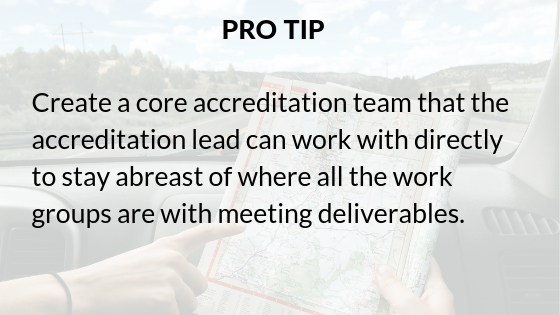
Responsibilities associated with stages of accreditation process
There are six stages in the accreditation process, each with different responsibilities. Below are some salient tasks for which the organization is responsible.
Application & agreement
The application and agreement phase of the process is an opportunity for the organization to assess the cost of accreditation and explore the service standard sections that may be relevant to the programs provided. Once the organization has decided to pursue COA accreditation, the accreditation agreement is signed and the work begins.
Intake
Think of the intake stage as COA’s opportunity to acquire information from the organization on all your programs and locations in which they operate. When highlighting the scope of services at each program, be concise. COA uses this information to determine the appropriate service standard for each program. Do not spend many months in this stage of the process – it will prolong the assignment of service standards. The organization’s Site Visit will not be scheduled until all program documentation has been submitted to COA.
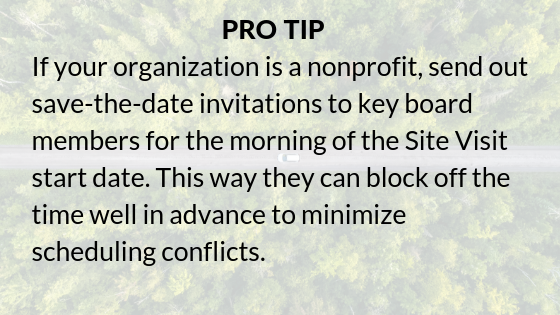
Self-Study
When the organization enters the self-study stage of the accreditation process, all standard sections have been assigned and the due dates for the Preliminary Self-Study and Self-Study have been scheduled, along with the start date for the Site Visit.
During this phase of the accreditation process, the organization should implement the structure for managing the standards review. Work groups should conduct an assessment of its current practices, policies and procedures against the COA standards. A self-assessment helps the organization to know where it needs to prioritize its time and resources.
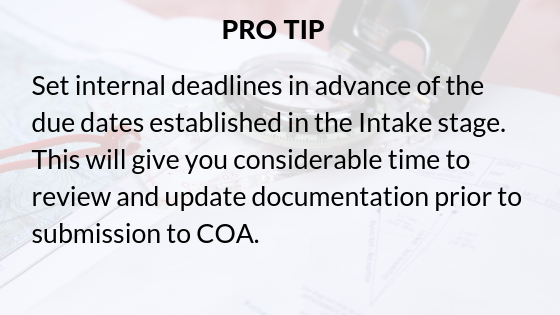
Site Visit
Once the Self-Study has been submitted, the accreditation work groups should begin compiling documentation to have available during the Site Visit. Reserve a meeting room for the Peer Review team to use while they are onsite for the duration of the Site Visit. All documentation should be clearly labelled by standard section, including the relevant core concept standard. The information the Peer Review team will evaluate can be available in paper or electronic format.
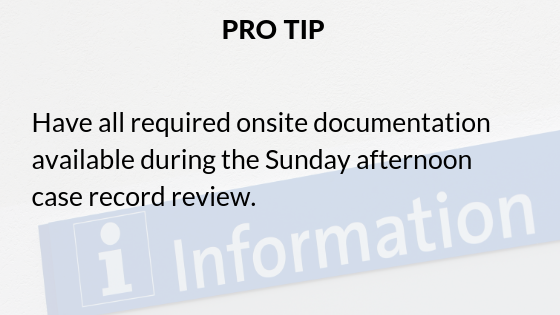
Building and sustaining momentum
If you are following the steps as listed, by now the “why” behind accreditation has already been established. An inventory of the strengths of staff has been conducted, and the process for managing the accreditation work is in place. Now the organization needs to formally roll out this significant initiative and keep staff engaged throughout the entire process.
Set a kick-off date
A kick-off event, such as an all-staff meeting, is a great way to launch the accreditation work. Use this time as an opportunity for the executive director to explain to staff why the organization is pursuing accreditation and why it is valuable. It is an opportunity to inform staff that pursuing accreditation can provide professional development and team building.

Themes and activities
Knowing the “why” behind the organization’s pursuit of accreditation may not be enough for some. For those who are charged with managing the accreditation process, consider ways to make different aspects of the work fun and exciting. Television shows, sports, movies, are all options that may be suitable to connect accreditation work groups. Visual display boards serve as a reminder and can foster healthy competition within the organization.

Final thoughts
The accreditation process can be overwhelming —there are many aspects that need to be managed. Hopefully, your creative juices are flowing with ways to make this organization-wide initiative manageable and fun. Remember, to get others involved, align the work with the strengths of staff and challenge the organization to always strive to be better.
Been through the accreditation process before? Share your thoughts on some things you wish you had known before you started the accreditation process. Recently completed the accreditation process? Let us know some of your pro tips that helped your organization through!
It is no secret that the Council on Accreditation (COA) believes in what we do. We promote best practices and help our organizations to implement them with the aim that clients across the social services field will get the best possible quality of care. By accrediting the entire organization, we ensure that everyone—from human resources to finances to support staff—is working together to carry out that mission.

This is the “why” of organizational accreditation for COA and our accreditees alike. We are all here to do good; following best practices helps us do good in the most effective way possible.
Improving service quality is the most important benefit of organizational accreditation. But from our experience, it is not the only benefit! Every time an organization completes the accreditation process, COA asks about its impact. Several themes have come out of our survey responses.
Organizational accreditation improves operations.
Whole-organization accreditation provides a framework for staff to look at how they fulfill their mission now and discover how they can do so better. The benefits along the way are multifold: more open communication, sound strategic plans, streamlined work systems, better risk management…the list goes on. When an organization looks at itself holistically, it can find the root of any problems and be better equipped to solve them.
94% of COA-accredited organizations agree that accreditation improves organizational learning and knowledge. 82% agree that it improves organizational capacity. COA accreditation has helped some organizations bring themselves back from the brink of bankruptcy; others have used it as a tool to position themselves to become leaders in the field.
Many have expressed that reaccreditation is not an end of itself, but a tool to help them achieve new heights of living their mission. COA is proud to help them do that.
Organizational accreditation boosts marketability.
Organizational accreditation is a professional, 3rd-party recognition that an organization meets the highest standard for both quality service delivery and administrative practices. The effort that an organization goes through to achieve accreditation proves just how much its staff cares about what they do.
This hard work helps organizations stand out among competitors and builds goodwill. 85% of our organizations agree that COA accreditation improves their organization’s marketability. 90% agree that it improves their relationship with external stakeholders. Clients and community alike are looking for signs of quality—accreditation gives them a big one.
Organizational accreditation helps secure funding.
Organizational accreditation verifies that an organization not only does quality work, but also has sound financial, administrative, operational, and oversight practices. This third-party verification can inspire the confidence funders need to support an organization as it continues to grow.
This can help in terms of government funding, as well. COA is recognized in over 300 instances in 50 U.S. states, the District of Columbia, Canada, and China. Our list of recognitions continues to grow, and with it the financial benefit to our accredited organizations. As of December 2018, 70% of our organizations agree that COA accreditation ensures funding.
Organizational accreditation can give staff a sense of fulfillment.
Accreditation encourages organizations to look at themselves frankly and work toward continuous quality improvement. This can allow staff to take a break from their daily grind and appreciate the big picture of their impact. Organizational accreditation also facilitates transparency and open communication, which can increase trust and the feeling that everyone is working as part of one team. Finally, the quest for quality improvement provides staff with new professional opportunities, allowing them to lead the charge toward a brighter future for those they serve.
Almost three quarters of COA-accredited organizations agree that accreditation improves workforce engagement, and over half agree that it improves staff retention. Many of our organizations describe how empowering it is to see the change in mindset that accreditation can bring.
Organizational accreditation holds the team to its goals.
As anyone with a broken New Year’s resolution knows, it is easy to put great plans in place and never carry them out. Accreditation (and reaccreditation!) forces organizations to follow through with those great plans, holding them accountable to be the best they can be.
94% of COA-accredited organizations agree that our whole-organization accreditation improves transparency and accountability. Through it, staff become not only accountable to their clients and stakeholders, but to themselves.
Time and time again, accreditation has proved transformative for our organizations, supporting their mission and allowing them to provide clients with the quality service they deserve. COA is grateful and humbled to be a part of this important process.
Have you experienced other accreditation benefits not listed here? Share them with us in the comments!
SOURCE: All statistics are pulled from 2018 survey data from organizations accredited by the Council on Accreditation (COA).
We are all impacted by government spending and regulations beyond our day-to-day work in human services. Regulations empower us as consumers to make informed decisions about our health and safety. They give us peace of mind as employees, that our employer’s practices will be fair and that public spaces will be clean and meet the necessary standards.
We put faith in our political representatives to advance regulation in order to improve the overall welfare of our society. Over time we observe reactive regulation created to address urgent events, gradual regulation to help move the needle on key issues across a country, and preemptive regulation intended to aid the success of future generations.
Let’s explore the role of government regulations and learn more about their value to human services:
Need drives change
First, let’s discuss a historic example of the need for regulation. In September 1982, 12 year-old Mary Kellerman of Elk Grove Village, Illinois, died after consuming a capsule of extra-strength Tylenol. Within a month six more people in the vicinity would be dead and over 100 million dollars’ worth of Tylenol would be recalled from shelves across the United States. These instances amounted to what would be known as the Chicago Tylenol Murders.
The still unidentified perpetrator was purchasing Tylenol in the Chicago area, adding cyanide to the capsules, and returning them to the store. In turn the store was restocking shelves with the returned product and those that purchased and ingested the Tylenol died within an hour of consumption. Johnson & Johnson, maker of Tylenol, distributed warnings to hospitals and distributors and halted Tylenol production and advertising. Police drove through the streets of Chicago using megaphones to warn residents about the use of Tylenol.
In 1983, in response to the incident, Congress passed the Federal Anti-Tampering Bill, also known as the “Tylenol Bill”. The bill made it a federal offense to maliciously cause or attempt to cause injury or death to any person, or injury to any business’ reputation, by adulterating a food, drug, cosmetic, hazardous substance or other product. It also created a FDA requirement that all medications be sold in packaging with tamper-resistant technology.
In the face of a terrifying public safety situation, urgent government regulation was able to ease fears and create a foundation for the way medication is regulated in the U.S. today.
Regulation and our families
An example of regulatory oversight within the human services field is the passage of the Family First Prevention Services Act (FFPSA) by the U.S. Congress in 2018. It marks the largest reform of child welfare financing that has occurred in the past decade. The goal of the child welfare system is to keep all children and youth safe. The regulatory and spending path to deliver that safety has forever been changed because of this legislation.
Today it would be rare to find a human services professional that does not feel the primary initial goal for child placement is reunification with a parent or family member. Acknowledging that to keep kids safe in the long-term we must support families and alleviate issues that may lead to unsafe conditions/removal is widely accepted as best practice. The passage of FFPSA codifies this practice into law and allows funds to be used for family strengthening/preventative practices in child welfare agencies. This is a shift from exclusively funding out-of-home placement, which somewhat incentivized and eased this type of placement.
Though the enactment of FFPSA is a giant leap forward for the field, requiring some states and agencies to change decades of practices and redefining the way we regulate and implement a government program, the overall goal remains the same: to keep all children and youth safe.
Accreditation, a piece of the regulatory puzzle
Accreditation standards serve as a vehicle to implement and verify best practices. COA accreditation is recognized in over 300 instances across the US and Canada as an indicator of quality. In some cases the journey towards accreditation is due to a mandate, which is when states require that certain types of organizations become accredited. Another motivation for seeking accreditation might be due to deemed status, which is when state licensing bodies allow service providers to provide proof of accreditation in lieu of undergoing certain parts of the licensing process. The practice of states/provinces recognizing accrediting bodies is one way that they implement regulation, oversee services, and work to increase quality of services. We recommend checking out the blog post, Help! I’m Mandated! Now What? Choosing an Accreditor to learn more about navigating this topic.
Over time standards are updated to reflect advances in the field, changes in research and practice, quality indicators, and shifts in government regulation. Throughout an organization’s accreditation cycles they are able to evolve with these changes. Accreditation requires that organizations engage their stakeholders, creating an environment for services to adapt alongside the needs of the community. This relationship between accreditors, regulators, and service organizations builds a foundation for continuous quality improvement for both entities, improving outcomes for the clients served.
Conclusion
Instead of approaching government regulations as just another requirement, step back and imagine how they can assist with meeting your organization’s mission. How can these directives support your long-term goals or bolster best practice? As outlined through these examples, regulation is often born out of necessity. These rules can determine a health outcome, the safety of and access to medication, and the path for a child in foster care. At times regulation might seem like another hoop to jump through but in fact it can be a valuable component to your quality assurance toolkit.

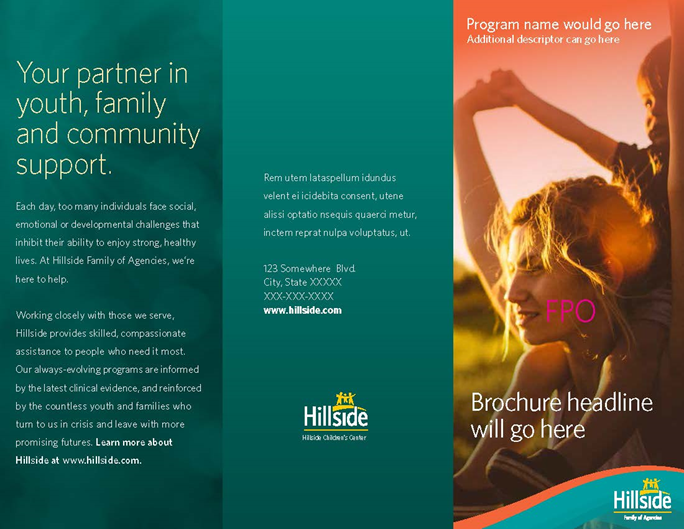


!["We have really enjoyed the fact that we are united by the power [of] COA accreditation and by sharing our common mission [of] providing children and families, in a contexual and in a multicultural approach, with the best." -Jorge Alberto Acosta, Founder of Nuevo Amanecer Latino Children's Services](https://static1.squarespace.com/static/5817757515d5dbcebad2b0bc/t/5c758d43f9619ac702a6edb4/1551207752285/Copy+of+Benefits+of+Accreditation+Pull+Quotes+%285%29.png?format=1000w)
